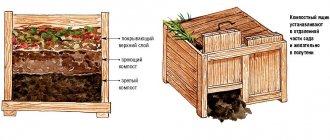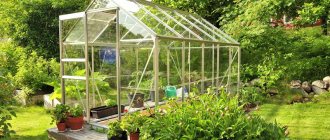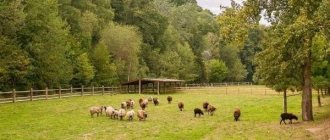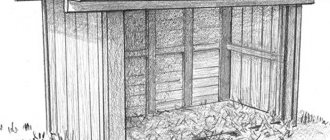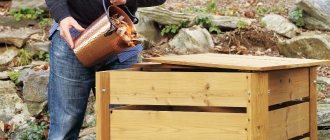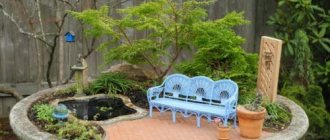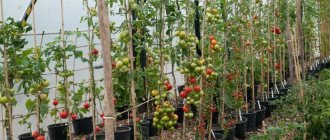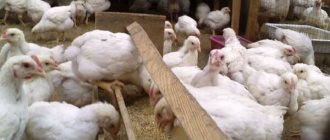My review as the owner of a solar bio vegetarian
If you are eager to purchase the Kovrov SBV project and build a solar bio vegetarian with your own hands according to their drawings, then I intend to dissuade you from this venture; in the end you will not get anything good except sadness and disappointment.
I’ll say right away that the project itself is not worth the money. + a lot of headaches - flaws. (I’ll write about them below, with photos)
The project is absolutely not finalized for year-round cultivation; moreover, they blatantly lie on the Internet that their SBV works all year round, including in winter, thereby misleading naive people.
Just look at the screenshots:
Group screenshot
But on the official website there is no such nonsense, but you won’t immediately notice the truth until you carefully read everything that is written on the site:
Website screenshot
Except for this:
They say that you can grow mushrooms without additional lighting! I, and our readers, have a question: “Why build a greenhouse for 4,500,000 rubles or more to grow mushrooms in winter?”
And mushrooms are also not so easy to grow, to grow champignons you need 4-level racks, bags of soil need to be placed on each level, changed after each harvest (bring the soil, put it in bags, then put them back on the racks, and the old where to dispose of the soil?), sow the mycelium, water carefully so as not to break the small mushrooms with the stream (This is not drip watering!) This is all a huge amount of work.
And when spring comes, we need to remove all this, dismantle the shelves, prepare the ground again, but this time for plants. Have you ever tried this yourself? Happened? Why don’t you grow mushrooms in winter if it works? Why do you advise something that you don’t do yourself?
They also blatantly lie that it pays for itself in less than 1 year. I don’t know how it is now, but personally the author of their courses lied to me. In Kovrov, it may even pay off, because... Moscow is nearby and you can sell your products at good prices. But Russia is not Moscow, and the population of the country is poor and no one will buy at high prices.
They claim that the price of 1m2 = 3,500 rubles at an exchange rate of $1 = ~ 60 rubles, which is also a blatant lie, the real price is from 5,000 rubles per 1m2 with equipment - lighting, heating, watering, heating beds, ventilation. And this is the price if you build it yourself without hiring employees.
Also in their VK group they have a bunch of all sorts of stupid courses with crazy price tags, apparently they are targeting Muscovites. I am sure that their courses are simply information taken from the public domain, the author of the courses did not pass this information through himself, did not work with the land and did not work in vegetarianism himself, at least for 1 season, all he does is sell another information nonsense taken from the “Internet trash heap”.
Lumen - false:
Real Agronomists with many years of experience share their experience, shoot videos and upload them to the Internet for free. Because it is impossible to gain new knowledge without sharing old knowledge with others. Here is a list of popular Agro-bloggers and their YouTube channels:
[output via Ajax]
- Lenya - AGRONOMIST'S NOTES (https://www.youtube.com/channel/UCdzZ_w30DvaER0brUH0CQ6w)
- GARANT-AGRO Mikhail Gennadievich (https://www.youtube.com/channel/UCUfSeOI1Mz6z7JPGaYtBzeQ/featured)
Why is it unprofitable to grow in svv, heifer, or greenhouse in winter?
The answer is quite simple, very little light - only 6 hours. Again, this is provided that the sky is clear and clear and the sun is shining, which, in fact, almost never happens not only over cities, but throughout the country. There is a way out and over time we will try it - to make a cloud splitter (orgone installation). But even in this case, you will need to add additional lighting 10 hours a day.
In the meantime, if it is not there, or if it does not dispel the clouds as we would like, then we need to hang HPS 400 lamps (used in all greenhouse complexes) or special LED lamps with a special spectrum. One 400 W lamp costs approximately 3,000 rubles in 2021 and illuminates an area of 4 m2. For an area of 220 m2 (half the area of the path) you need 50 dnat lamps (150,000 rubles).
You need to provide additional lighting 16 hours a day - 50 lamps * at 0.4 kW/hour = 20 kW/hour * 16 hours = 320 kW * ~3 rubles/kW = 960 rubles/day * 30 days = 28,800 rubles per month. A month Karl! = )
Accordingly, if you plant in October, then you need to illuminate October, November, December, January, February (preferably also March, but we will not take it into account). Total 5 months * for 28,800 rubles = 144,000 rubles. Plus here we add heating per month ~ 6,000 rubles * 5 months = 30,000 rubles. Total 174,000 rubles for the winter period. Plus, in March and April you also need to heat and add a little extra light.
I made a table in Excel for approximate calculation of lighting and heating costs, download and “play” with the values.
[Calculation of costs for lighting and heating Exel 97-2003] (if I made a mistake somewhere in the table, let me know)
Shortcomings and headaches of the project (photo)
Roof
For us it fell on January 3, 2021. There was no snow removal for almost 2 months. Where have you seen home owners clear snow every year? And why do you need to make a roof that you need to constantly monitor in winter? What if you go away for a month in winter? You arrive and there is no roof, but what if you have a 70-meter roof? And will she fall? But you’re too tired to clean 70m*6m=420 m2, it’s a hell of a lot of work. But it’s also uncomfortable to walk on the roof, you constantly slide...
The problem was ours, we moved away from the project and trusted only “Roof Builder”, because... he did the roof of our house more than 10 years ago and he has been building roofs for 10 years. I remember how I called him and asked: “Will a 150x50 board in the amount of 18 pieces work?” He said: “It’ll go!” Bastard…
2/3 of the roof fell where there were two beams 180x100, each 3 meters apart, it held up, but the beams cracked. It withstood despite the fact that the beam was cut by 3-5 cm, as I learned later from my uncle, if a board or beam is cut by, for example, 3 cm, then if the beam was 18 cm, then it will hold the load like an uncut 15 cm beam.
Beam 180x100 sawn to 3-5 cm
In order not to saw down the timber for fastening to the channel on the new roof and to preserve its load-bearing capacity, we came up with the following:
Angle for attaching timber to a channel
Angle for attaching timber to a channel
18 corners
Corner in action on a new roof (Finished result)
Capercaillie bolt 12x110 mm and 2 drills for it
At first I wanted to make it from a metal sheet 5-10 mm thick, but I couldn’t find it, and at the greenhouse factory they lowered the price to 7 thousand rubles. for 18 corners with work together.
In general, we bought 50x5 mm plates, cut them into 40 cm and 15 cm, welded them together and drilled holes for a 12x110 mm bolt (see photo of the bolt above). The legs are welded at an angle of ~∠ 10°-13° degrees. It cost about 2 thousand rubles.
We decided to lay a 180x100mm beam (at first I wanted 200x100, but they said that they bend in a spiral when they dry, but 180mm doesn’t) at a distance of 120 cm and between them a 180x50mm board so that there would be openings for the size of the insulation. The result was openings of 55-57 cm.
Along the racks to support the roof, the guys who installed the frame advised us to weld the 12th channel. Photo:
12 channel and surviving part of the roof
After the roof fell, they wanted to raise the roof to the maximum, but they didn’t want to raise the side walls and would have had to weld a new channel and the beam would have been 7 meters long.
In general, for reliability, it is advisable to place 2 columns of pillars along the roof with a channel on which the roof will rest. So if you are the owner of a 78-meter-long vegetable garden and you are afraid for the roof, then it is better for you to strengthen it so that the roof is supported by 2 columns of pillars.
Sketch of 2 columns of support pillars for the roof
Half truss Now about the half trusses and the windows on them, it’s generally hot here, the mediocre connection of the pillars with the half truss. When we were installing the frame, everyone asked why the hell was such a stupid connection? I answered: “That’s how it is in the project, I don’t know anything.” This connection is ideal if made on both sides of the half-truss, instead of the roof. It will probably look cool...
Connection of half-truss and pole
This connection forces us to reinvent the wheel. I had to come up with a fastening for windows made of bars. Now I’m thinking of welding an 80x40 profile instead of bars so that I can drill plastic windows into it. I think in general everything except the windows should be covered with penoplex or its equivalent at the top. By the way, in the vegetarian garden on a summer evening it is much darker than in an ordinary arched greenhouse, because of the roof.
Window
At the bottom of the trusses they installed 2 plastic windows 2.05 x 0.5 m with glass, the approximate weight of one window is 35 kg. It is sagging and does not allow the window to be closed freely; you need to weld a partition over the window and drill the window into it, then the window will rise and close smoothly. Or it was necessary to put the hinges down, but then when it rains, all the water will pour inside the vegetarian...
On the outside of the windows, on top, you need to glue the film to the carbonate and to the window, otherwise water will seep through the window and through the upper hinges into the window. Also, the sides and bottom sides need to be treated with waterproofing, in no case with bitumen mastic, otherwise it will melt in the sun and flow all over the window as in the photo below.
Plastic window 2x0.5 m - view from the street
View from the street
Protective film from rain
Bitumen mastic: flows in the sun
Bitumen mastic
Bitumen mastic
Sagging window, weight ~35 kg (3 hinges)
The window sticks and does not close without effort
Kovrov workers replaced the glass with polycarbonate, and we will do the same in the future.
Ivanovo underground ventilation for heating beds
1 meter of galvanized pipe (air duct) with a diameter of 125 mm and a thickness of 1 mm costs 190 rubles as of 2016-2017.
Pipe diameter 125 mm
Pipe diameter 125 mm
It needs to be stretched to its full width - 14 meters under each bed (we have beds according to Mittlider 50cm and 50cm aisle, bed length 12 m + 2 m aisle) Ivanov recommended a step of 70-90 cm between the pipes, but let’s assume that we will have 100 cm.
If we have a greenhouse/vegetarian/greenhouse with an internal length of 18 meters, then we multiply 18 beds by 14 meters = 252 meters of galvanized pipe we need, multiply by 190 rubles = 47,880 rubles. This is only the underground part without corners. Now you need to lead it from the ground along the wall (~ 2 m), along the roof (~ 6 m), 1 meter up from the roof and 1 meter from the ground on the south side.
Soil heating with ventilation pipes
That is, 10 meters * by 18 = 180 meters * 190 rubles = 34,200 rubles.
Now we need corners (bends) to connect the nodes.
Bend 90 d 150
For one bed you need: two under the roof and two in the ground, + you can have one for a pipe protruding half a meter out of the ground, but we won’t count it for the sake of economy.
We multiply 4 allotments by 18 beds - 72 pcs. * 230 rubles = 16,560 rubles.
18 fans for 558 rubles = 10,044 rubles.
Axial fan Vents D125 D125 mm 16 W
Total: 47,880 + 34,200 + 16,560 + 10,044 = 108,684 rubles . Now add in the cost of shipping to you. (delivery price can range from 5 to 100 or more thousand rubles, depending on your location, the factory and region of residence)
Energy costs
16 W * 18 pcs = 288 W/h * 24 hours = 6,912 W (6.91 kW) * 31 days = 214.21 kW * 3 rubles = 642 rubles per month (provided that the main heating is working). It is not known how many degrees the earth will warm up in winter at a temperature in a greenhouse = 25 degrees.
What is the alternative to ventilation heating of the soil according to Ivanov?
A warm floor system, red pipes with an outer diameter of 16 mm and a wall thickness of 1.5-2 mm, cost 22-25 rubles per meter in our city in a construction supermarket.
This is exactly what we will use, at first I thought of cutting the sheets of crumpled corrugated sheeting that was left from the roof, but this is a lot of trouble: cut the sheets lengthwise so that they are half a meter long, then so that they are not crushed by the ground, you need to make semi-arches from the profile after 1 or 2 meters under them 15x15 mm or 25x25 mm and drill a profile to them, then dig trenches, mount and bury. And take out unnecessary clay.
Therefore, after thinking, I decided not to dig anything up, but to put a heated floor system directly on the beds and in the fall bring black soil, peat, river sand, mix them and pour them on top.
This means the bed is 50 cm, we will put 4 branches per 12 meter bed = 48 meters * 18 beds = 864 meters * 25 rubles = 21,600 rubles. Plus 20 meters for the main (hot) pipe and 20 meters for the return pipe and a reserve of 20 meters. 60 * 25 = 1500 rubles.
Tees. There are 2 options, either we put 2 tees on each bed (for the main pipe and the return pipe), then we get 18 * 2 = 36 tees, or we unwind one 200-meter bay into 4 beds, then for 4 beds we need 2 tees, for a total of 18 beds need 10 tees.
The advantage of the first option is that all the beds will be heated at the same time, but the disadvantage is that the likelihood of antifreeze (water) leakage greatly increases.
The advantage of the second option is that 26 tees are needed less (~2600 rubles in savings), and the disadvantage is that the beds will heat up unevenly when turned on, but if the heating is constant without long shutdown intervals, then this may not be considered a disadvantage.
Saving resources
The bay is 200 meters, for 4 beds you need 48 * 4 = 192 meters, from each bay there are 8 meters left, this is if there are 2 tees on each bed, if the entire bay is unwound into 4 beds (2 tees for 4 gr.), then more + 3 meters (one meter per connection between the ridges) and then the remainder from the bay is 5 meters.
If we take 4 bays, then the remainder will be 20 meters, but we also take 70 meters for the main and return lines and 10 meters in reserve, totaling 864 + 80 = 944 meters
Volume of water in the bed heating system:
You will also need:
- 3, or better yet 5 fittings (2 in reserve for an emergency);
- expansion tank (~2000 rubles), or homemade from a 20 liter canister;
- antifreeze (volume ~118 liters, 90 rubles/kg propylene glycol, 70 rubles/kg glycerin) (~10,700 rubles), or water;
- pump (~3500 rub.).
- temperature control sensor inside the pipe (~900 rub.)
We will not count cables, sockets, plugs.
Total: 500 + 2000 + 10,700 + 3500 + 900 + 23,600 = 41,200 rubles . And if without antifreeze and with a homemade expansion tank, then 28,500 rubles.
Energy costs
Price for monthly heating of the system to 30 degrees: (click to enlarge)
Total approximately 8.9 rubles. * 24 hours * 31 days = 6,622 rubles. + ~201 rubles (pump operation) = 6,823 rubles per month. I don’t know how accurate this online calculator is.
It’s expensive, but in the future we will make (American) free heating (volcano principle) from 40 cubes of sawdust in which 1 km of hose will be wound, it should have a temperature of 60 degrees Celsius all year round. Then you will only have to pay 201 rubles per month for the operation of the pump.
Solar greenhouse Ivanova - how to build a solar vegetarian with your own hands
An adjustment chamber with plugs and an electric fan for forced air circulation is installed along its path.
Beds in a vegetarian garden Tip: on the main wall of a vegetarian garden it is possible to place a couple of tiers of hanging flowerpots with remontant strawberries or flowers, for example nasturtiums.
CONCLUSION
Firstly, never listen to people who have a protruding belly, because they are controlled by parasites in the literal sense, we only listen to slim people (we have an order of magnitude less parasites). By the way, Sberbank of the Russian Federation adheres to this rule when hiring employees!
Listen to those who have actual experience behind them or to those who provide the most complete and accurate data on financial costs both per month and during construction, which you can easily check yourself.
And those who open their blather and talk about payback in less than 1 year, without working in the greenhouse itself, hiding what exactly needs to be grown to pay off in 1 year (obviously not cucumbers and tomatoes), send them to hell or demand accurate data for free. They may promise you that all the data is in the project or in some courses - but by purchasing it you will not get anything, or you will receive data that is simply taken from the air or from the Internet, not supported by the personal experience of the author. As I wrote above, real agronomists share their knowledge for free.
Secondly, in winter there is not enough sunlight for growing in the greenhouse; you need to provide additional lighting for 16 hours a day, which reduces all profits to zero and in some cases to minus (depending on what you grow). Plus there is a constant risk of electricity/gas outage, which can lead to complete loss of the crop. You need to constantly monitor and protect yourself as much as possible from possible cooling of the greenhouse. (It’s different in America: +20 degrees 12 months a year...)
If you still decide to build a vegetarian greenhouse/greenhouse, then set up a test greenhouse made of wood and cover it with film (video below), it will cost 20-40 thousand. But you will understand what, how and how much harvest you can get from it. This is exactly where we needed to start and not pursue year-round cultivation.
How to build a budget greenhouse for 20 thousand rubles with your own hands
A greenhouse is a structure for growing seedlings
Many summer residents equip greenhouses in their gardens - a simple structure designed for growing seedlings and vegetables in the cold season. It is mainly used in early spring or autumn, when the temperature drops sharply and can damage the plants being grown.
A greenhouse is a small structure, the frame of which is made of metal-plastic pipes or wooden frames and is covered mainly with film.
It is important to choose the right place to place the greenhouse - a flat surface on the sunny side of the site. It is advisable to place the structure close to the place where the seedlings will be planted.
The simplest greenhouse can be used when the temperature drops to 5 degrees below zero - the heat necessary for the plants is retained inside the structure. The design is generally low, the maximum height is 130 cm. There are no doors in the greenhouses; to get to the plants, you can open the top of the greenhouse or install special windows to access the plants.
What is a greenhouse used for:
- Growing seedlings in the spring before planting them in the ground;
- Growing early vegetables - radishes, onions, herbs;
- Growing indoor flowers in pots;
- Nurturing cuttings of trees, bushes and grapes for further planting.
The simplest version of a greenhouse is made of boards and transparent film. The structure can be installed on a foundation, or you can do without it. Also quite common is a greenhouse made from old wooden window frames, which are fastened together with nails or self-tapping screws.
Polycarbonate greenhouses are more durable, but also more expensive and require an additional foundation under the structure.
Small greenhouses do not have a heating system, but they can be equipped with biofuel, which rots when exposed to sunlight and releases heat. Typically, this warmth will be sufficient if the nighttime temperature drops slightly below freezing.
What kind of heating is best for greenhouses?
We will cook vacuum registers; we need 120 meters for a 19x15 meter greenhouse. Costs: ~25,000 semi-automatic welding machine AuroraPro Overman 180, pipe 100x100x3mm - 120 meters and 125 meters pipe 20x1.5mm - I don’t remember exactly, I thought for a long time, it’s about 90 tr. for 2017.
+ 15-30 liters of ethyl or methyl alcohol as a “heat transfer agent”, I don’t know the price. Methyl is better because its boiling point = ~60°C, and that of ethyl ~78.3°C. I asked a friend of mine, a chemist by training, and I said: “Listen, in programs about anti-freeze agents they say that people are poisoned by them because of the methyl alcohol content in them,” to which he answered me that this is complete nonsense and they have an open tank in Lukoil with methyl alcohol, and they wash their hands after working in it. But nevertheless, it is better to play it safe and use ethyl. But according to a friend, they buy 1 liter of pure methyl alcohol for an average of 18 rubles. Significant savings!
Approximately 110 tr. without a semi-automatic device, if you cook it yourself. If I buy, they told me that it will cost 204 tr. + delivery of 20 thousand. And some of them even lowered the price for me to 500 tr.))) Can you imagine? Muscovites are damned, then the doer himself came, he says, come on, I’ll do it for 300 without Muscovites)) I say: “I found it for 204,” he asked who, I said in Cherepovets, he says: “Yes, I know those who make them , their coolant is different (or bad, I don’t remember exactly)”, in general theirs is bad, but his is good... Muscovites need to be put in the right place, pretentious slaughter......and, I’m sure you will agree with me, because he hates them all Russia. 96 percent. Where does this figure come from? From the ceiling.
Energy consumption of vacuum registers
Those who wanted to sell them to us at an expensive price said that in a system of 120 meters of vacuum registers there would be approximately 30 liters of water and the cost would be ~6000 rubles per month maximum. (As soon as we check, I’ll immediately add the test results here.)
Ivanov's solar vegetarian - video
Do-it-yourself solar vegetarian (greenhouse) (Part 3)
Fascinating notes:
Relevant articles selected according to important queries:
- Do-it-yourself greenhouse made of polycarbonate - construction development
A polycarbonate greenhouse with your own hands makes it possible to purchase fresh vegetables from your garden plot at the earliest possible time. Modern frames made…
- Greenhouse from window frames: DIY construction
After replacing the double-glazed windows in the house with new ones, the owner remembers how to use the old windows. There will always be a use for them on the site, for example, good...
- Do-it-yourself collapsible polycarbonate greenhouse
For a polycarbonate greenhouse, winter is not the best time. Layers of snow accumulating on the roof can damage even the most durable roof. It seemed...
- Building a summer house with your own hands
Having your own country house on your summer cottage, with a basement at that, is the dream of every summer resident. To build a house there is not a large quantity and you first need to know what and how...
- Building a wooden sauna with your own hands
It is recommended to build a bathhouse at the stage of designing a house. This method of planning will resolve the most rationally and effectively...
- Do-it-yourself independent sewerage: construction rules
It’s hard to imagine a personal home or cottage that doesn’t have its own sewerage system. Moreover, today, in order to save money, many are trying to do...
Do-it-yourself solar vegetarian (greenhouse) (Part 1)
Tags: vegetarian, sunny
Calculation of lighting in winter in a greenhouse
Go ahead. While you can save on heating by making it yourself, you can’t make light bulbs at home. The only thing is to assemble the throttles, isu, reflectors, etc. yourself.
Why will DNAT be better than DNAZ for us? A DNAT lamp costs ~300 rubles, and a DNA3 lamp costs ~2200. We make reflectors from 0.3 mm anodized aluminum sheet. As a result, we can change 7 HPS lamps instead of one HPS lamp. The savings are significant. Yes, DNAT has a couple thousand less lux, but it’s tolerable.
LED lighting, in theory, will consume 20-30% less electricity, since HPS(Z)s have a green spectrum, which they say is not needed by plants and therefore it is reflected, and because of this we see plants green.
What kind of greenhouse would I build now if I had the funds?
I would build 2 arched greenhouses like in the video below, I don’t know if it will withstand Siberian snow loads, in principle it should, + the wind will blow the snow away from above, but you can strengthen the top and cover it with 8 mm thick honeycomb carbonate instead of a film.
By money:
Heifer 9m wide by 16m
Cup - where the arch is inserted - a pipe with a diameter of 76 * 3 mm = ~ 271 rubles / m. 1.2 m (70 cm in the ground and 50 in the upper part)
Ridge height 4.5 meters
To determine the size of the pipe for the arch, we use the formula. We take the width - 9 meters * 3.14 and divide in half = 14.13 meters.
| Greenhouse 16*9 meters | ||||||
| Pipe (diameter and thickness) | ~Price per 1 m (2017) | Length | Price per piece | Quantity | Total (RUB) | |
| 57x3mm (Arch) | 225 rub. | 14 meters | RUR 3,150 | 9 | 2 8350 | |
| 76*3 mm (Cup) | 271 RUR | 1.2 meters | RUR 325.2 | 18 | 5 853,6 | |
| 57x3mm (Ties) | 225 rub. | 16 meters | RUB 3,600 | 7 | 25 200 | |
| 57x3mm (For vents) | 225 rub. | ~ 50 meters | RUB 3,600 | 1 | 11 250 | |
| Total 70,653.6 | ||||||
| Cellular polycarbonate, | 2.10×12 m | ~9000 | 9,5 | 85500 rub. (hangar part only, without side walls) | ||
The pitch of the arches is 2 meters. Watch the video:
Arched greenhouse
In general, we round up the price for the frame to 160 thousand rubles.
Drip irrigation for 1000 bushes and pump ~ 24 t.r.
1 eurocube of used food with delivery ~ 15 tr.
+ 50 for installation of the frame and wire for garter
+ 50 wooden beds 50 cm wide and a passage between them 50 cm. ~ 50 t.r.
+ Kamaz chernozem + Kamaz peat + Kamaz sand ~15 tr.
+ heating of beds ~ 40 t.r.
~354 t.r.
354,000 / 144 m2 = ~ 2458 RUR/m2
If we use high-strength film, we will spend 300 rubles. (2,083 rub/m2). But this is in words, in reality there will still be costs for delivery, for painting, possibly for a crane, etc. Plus you will have to bend the arcs yourself and work.
Another option, the most important thing is to strengthen the greenhouses so that they can withstand maximum snow loads and do not need to be cleaned.
Budget greenhouse 130 meters for $394
Such a greenhouse significantly saves money if you have a lot of land. You can place them in blocks 1-1.5 meters from each other, so that in winter there is somewhere for the snow to slide off the greenhouse. And if the space is small, as in our case, then you need to come up with a powerful greenhouse frame that will hold 06.-1.8 tons per 1 m2, but this will be a separate article.
The next article will be about Chinese vegetarianism and the climate of China.
And also about the cost of assembling drip irrigation with a service life of 10-20 years.
PS: S. Konin stop lying!
Video review of a person who promoted SBV
Preparation for construction of the structure
Before you start making calculations and purchasing building materials, you will need to choose the location of the vegetarian garden. The structure should be located from north to south, on a natural or artificial slope. It is desirable that trees and shrubs are located on the north side, and the space on the south is free and not shaded.
It is optimal if the vegetarian garden is attached to a residential building, ancillary or outbuilding. This will make it possible not only to reduce the volume of work performed, but also to make the wall structure more permanent.
When choosing a site for a greenhouse, you should take into account its size. The standard size of Ivanov’s vegetarian garden is 3.5 m high on the back wall, 2.75 m wide, 6 m long. If desired, you can take an arbitrary size, taking into account the free space on the site. After agreeing on the location and size of the greenhouse, you can proceed to the selection of material, its calculations, purchase and delivery to the work site.
